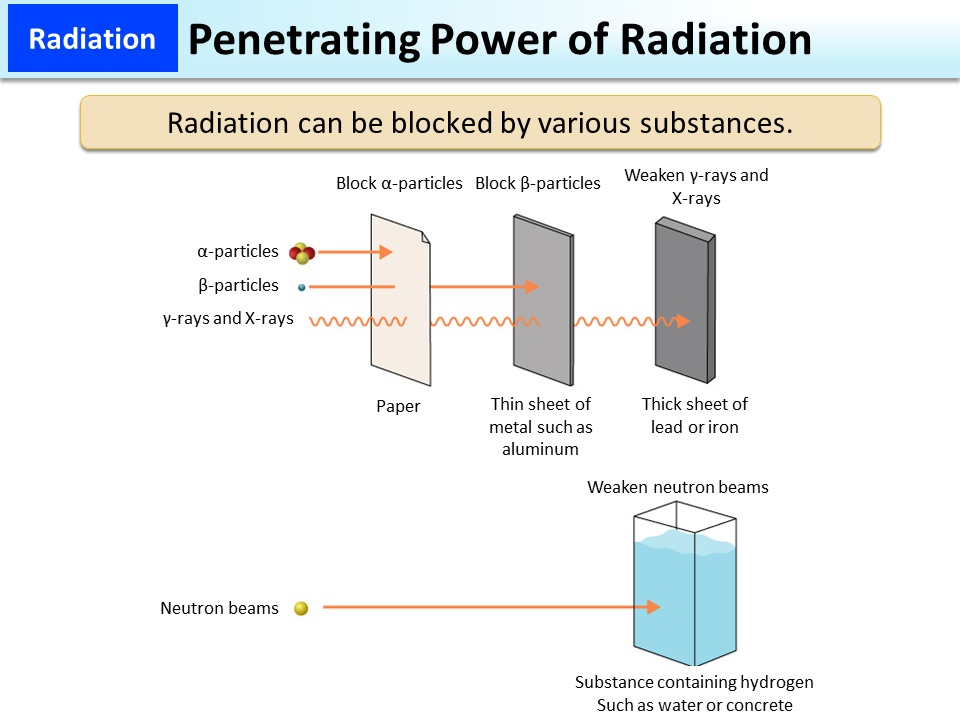Penetrating Power of Radiation
Charged particles or electromagnetic waves interact with a substance, lose their energy (speed), and eventually stop.
Since α (alpha)-particles cause a large amount of ionization, a sheet of paper is enough to stop them. β (beta)-particles travel several meters in the air, and a 1 cm thick plastic sheet or a 2-4 mm thick aluminum plate is enough to stop them, depending on how much energy they have. γ-rays and X-rays have higher penetrating power than α-particles or β-particles, travel several tens to hundreds of meters in the air (depending on their energy) and gradually lose their energy as they collide with atoms in the air. As γ-rays and X-rays can be shielded using thick plates of high-density lead or iron, those from radiation generators can be blocked using iron and the like.
Uncharged neutrons lose their energy through collision and are absorbed through interaction with substances. That is, neutrons lose their energy (speed) by directly colliding with nuclei that make up substances. They lose their energy most effectively by colliding with protons (hydrogen nuclei) that are almost equal in mass to them.
(Related to p.21 of Vol. 1, “Penetrating Power of Radiation within the Body”)
- Included in this reference material on March 31, 2013
- Updated on March 31, 2016

